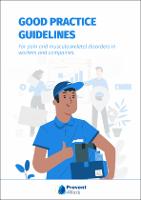Por favor, use este identificador para citar o enlazar este ítem:
https://repositorio.usj.es/handle/123456789/752
Registro completo de metadatos
| Campo DC | Valor | Lengua/Idioma |
|---|---|---|
| dc.contributor.author | Bellosta-López, Pablo | - |
| dc.contributor.author | Blasco-Abadía, Julia | - |
| dc.contributor.author | Belsué Pastora, Javier | - |
| dc.contributor.author | Hoegh, Morten S. | - |
| dc.contributor.author | Palsson, Thorvaldur S. | - |
| dc.contributor.author | Christensen, Steffan Wittrup Mc Phee | - |
| dc.contributor.author | Berjano, Pedro L. | - |
| dc.contributor.author | Langella, Francesco | - |
| dc.contributor.author | Vanni, Daniele | - |
| dc.contributor.author | de Brito Silva, Priscila | - |
| dc.contributor.author | Jensen, Palle S. | - |
| dc.contributor.author | Doménech-García, Víctor | - |
| dc.date.accessioned | 2022-02-08T11:23:56Z | - |
| dc.date.available | 2022-02-08T11:23:56Z | - |
| dc.date.issued | 2022 | - |
| dc.identifier.uri | https://repositorio.usj.es/handle/123456789/752 | - |
| dc.description | Grupo de investigación MOTUS. Proyecto de Investigación asociado: Prevent4Work | es_ES |
| dc.description.abstract | Actions to improve occupational health and safety arose from the need to protect employees working in European industries, such as nuclear power plants or large-scale chemical industries, from accidents. Today, the field has evolved in many directions, with the prevention and management of musculoskeletal disorders (MSDs) being one of its main lines of action. MSDs are the main reason for workers to take time off work. Specifically, the prevalence of MSDs represents more than 1.3 billion people and a loss of more than 100 million years of life due to disability; they are a common cause of disability and sick leave. Historically, the workplace approach to MSDs has focused on adopting ergonomic measures, which has been positive in some cases. However, despite ergonomic and biomechanical measures being widely implemented in the workplace, the increasing prevalence of MSDs globally indicates that they are not sufficient measures on their own. Therefore, new holistic approaches that take biological, psychological, and social aspects are needed to address them. The European Prevent4Work Alliance for innovative measures to prevent MSDs in the workplace has developed this document as a guide based on the most recent and relevant scientific knowledge. Both companies and their employees can benefit from the recommendations of this guide | es_ES |
| dc.format.mimetype | application/pdf | es_ES |
| dc.language.iso | eng | es_ES |
| dc.relation.requires | Adobe | es_ES |
| dc.rights | Atribución 4.0 Internacional | * |
| dc.rights.uri | http://creativecommons.org/licenses/by/4.0/ | * |
| dc.subject | Guidelines of good practices | es_ES |
| dc.subject | Occupational health | es_ES |
| dc.subject | Work | es_ES |
| dc.subject | Musculoskeletal disorders | es_ES |
| dc.subject | Low back pain | es_ES |
| dc.subject | Ergonomics | es_ES |
| dc.subject | European Project | es_ES |
| dc.subject | Erasmus+ | es_ES |
| dc.subject | Prevent4Work | es_ES |
| dc.subject | Guía de buenas prácticas | es_ES |
| dc.subject | Salud laboral | es_ES |
| dc.subject | Trabajo | es_ES |
| dc.subject | Trastornos musculoesqueléticos | es_ES |
| dc.subject | Dolor lumbar | es_ES |
| dc.subject | Ergonomía | es_ES |
| dc.subject | Proyecto europeo | es_ES |
| dc.title | Good practice guidelines for pain and musculoskeletal disorders in workers and companies | es_ES |
| dc.type | info:eu-repo/semantics/book | es_ES |
| dc.identifier.doi | 10.54391/123456789/752 | - |
| dc.rights.accessrights | info:eu-repo/semantics/openAccess | es_ES |
| Aparece en las colecciones: | Libros | |
Ficheros en este ítem:
| Fichero | Descripción | Tamaño | Formato | |
|---|---|---|---|---|
| Prevent4work - Guidelines for workers and companies-rev2-EN.pdf | 528,76 kB | Adobe PDF |  Visualizar/Abrir |
Este ítem está sujeto a una licencia Creative Commons Licencia Creative Commons

